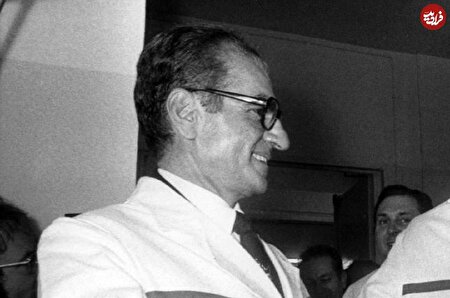
One Kidney Is Enough
When 29-year-old Sarah gave away one of her kidneys to a stranger she had never met, many around her questioned her decision. “Why would you go through surgery for someone you don’t even know?” they asked. Her answer was simple: “Because I could.” Sarah is one of a growing number of living donors around the world who prove a powerful medical and human truth — one kidney is enough.
In this report, we dive into the extraordinary world of kidney transplantation — where biology meets compassion, and where science and the human spirit join forces to save lives.
💡 The Silent Organ: Why Kidneys Matter
Kidneys don’t often make headlines, but their job is crucial. Each day, these bean-shaped organs filter about 50 gallons of blood, remove toxins, regulate blood pressure, and balance fluids in the body. When they fail, it isn’t dramatic at first — no heart attack, no sudden collapse. But over time, the impact is devastating.
According to the World Health Organization, chronic kidney disease (CKD) affects more than 850 million people worldwide, and millions develop end-stage renal disease (ESRD), where dialysis or kidney transplantation in Iran becomes the only way to stay alive.
⏳ Living Between Dialysis and Death
For many patients, dialysis becomes a bridge between life and death. It’s a grueling process, often done three times a week for 4–5 hours at a time, where a machine mimics the function of the kidney. It’s life-saving, but not life-giving.
“I felt like I was existing, not living,” says Kamal, a 43-year-old father of two who spent two years on dialysis before receiving a kidney from his cousin. “You’re tired, you can’t eat what you want, you can’t travel. Every part of your life revolves around that machine.”
For patients like Kamal, a kidney transplant doesn’t just improve survival rates — it gives life back.
🧬 The Science Behind the Surgery
Kidney transplants are now a common and highly successful procedure. In fact, kidneys are the most commonly transplanted organ, with more than 100,000 performed globally each year.
There are two types of kidney donations:
- Deceased donors, typically those who consented to organ donation before death.
- Living donors, who can give one of their two kidneys and live a healthy life with just one.
The transplant surgery usually lasts 3–4 hours, and with proper immunosuppressive medication, the kidney transplant success rate is high — over 90% of kidney transplants from living donors function well after one year.
Dr. Leila Moradi, a transplant surgeon based in Tehran, explains, “The human body is remarkable. One kidney is more than capable of handling the workload. That’s why living donation is not only possible — it’s often preferable.”

🧠 The Psychological Side of Giving
While the science behind kidney transplants is fascinating, the human side is equally powerful. The decision to donate — especially for a stranger — taps into deep values of empathy, morality, and purpose.
“I felt like I had this rare opportunity to actually save a life without dying,” says Sarah, the altruistic donor. “How often does that happen?”
Psychologists who study living donors report that the majority experience long-term psychological benefits — increased self-worth, reduced anxiety, and a stronger sense of community. Some even say it’s the most meaningful thing they’ve ever done.
🔄 A Chain Reaction of Kindness
In recent years, a growing trend has emerged: kidney donation chains. Here’s how it works:
- A donor wants to give a kidney to a loved one but isn’t a match.
- Instead, they donate to a stranger.
- In return, that stranger’s loved one donates to another person — and so on.
These “chains” have saved hundreds of lives and created webs of connection across cities, countries, and continents. One such chain in the United States included 30 transplants in a single sequence.
It’s a reminder that human generosity, when paired with smart logistics, can achieve the extraordinary.
🧭 In the Middle East: A Region of Hope and Challenge
In countries like Iran, organ donation has both cultural and legal complexities. While Iran remains the only country to have legalized compensated kidney donation, it has also drastically reduced waiting lists for transplants.
However, ethical debates continue. Besides the renal transplant cost Critics worry that this system exploits the poor. Proponents argue that it saves lives and provides financial relief to donors.
What’s clear is that the need is great. Thousands in the region are still waiting, and too many die before they get their chance.
Efforts to promote deceased donation, build public awareness, and create more structured national registries are ongoing — and essential.
🔬 The Future: 3D Organs and Xenotransplantation?
While current transplant medicine relies on human donors, the future might look very different.
Scientists are already experimenting with:
- 3D-printed kidney tissue
- Xenotransplantation (transplanting animal organs into humans)
- Stem-cell-grown kidneys in labs
These breakthroughs could one day eliminate organ shortages entirely. But for now, the best hope remains a willing human heart matched with functioning human tissue.
🤝 What You Can Do
Organ donation is often seen as something distant — a tragedy turned into a gift. But it’s more than that. It’s a choice, a commitment, and a message: “If something happens to me, let my body give others a chance.”
You can:
- Register as an organ donor
- Have open conversations with your family about your wishes
- Explore living donation if you feel called to do so
- Support awareness campaigns in your community
One donor can save up to eight lives. With living kidney donation, you can potentially save someone without even waiting for tragedy.
❤️ One Kidney Is Enough — And Sometimes, It’s Everything
Back in her hometown, Sarah lives her life like anyone else. She hikes, she works full time, she goes on road trips. She rarely thinks about the surgery now — except when she gets a message from the man who now has her kidney.
“He sends me photos sometimes — of his daughter’s wedding, of him running marathons. He says he never thought he’d see those days,” she says, smiling. “That’s when I remember what it meant.”
In a world often fractured by conflict and fear, a single act of compassion — like giving a kidney — shows us what’s possible when we believe in one another.
One kidney is enough — enough to save a life, enough to restore a family, enough to remind us that at our best, we are built to give.








